Biofloc fish farming represents a revolutionary shift in aquaculture, merging sustainability with profitability. Rooted in waste recycling and water conservation principles, this technology utilizes beneficial microorganisms to transform fish waste into valuable feed, offering an eco-friendly approach to fish culture. As the global demand for fish rises, biofloc offers a promising alternative to traditional farming methods, emphasizing efficient resource use, reduced environmental impact, and enhanced fish nutrition.
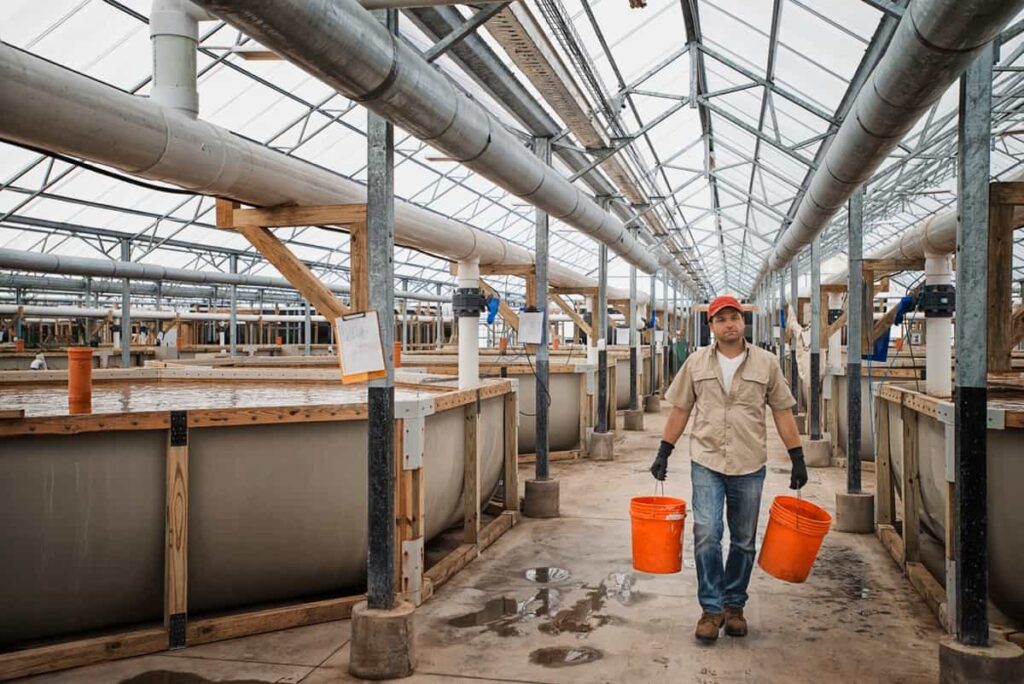
15 Steps to Start Biofloc Fish Farming
Understanding the Concept of Biofloc Fish Farming
Biofloc fish farming is a sustainable method of aquaculture that integrates biofloc technology into the fish culture process. This innovative technology involves recycling waste products within the fish farm to produce microbial proteins that serve as supplementary feed for the fish, enhancing biofloc fish nutrition. A critical aspect of this method is the biofloc fish waste management system, which ensures the water remains clean and healthy for the fish.
The benefits of biofloc technology in fish farming include improved growth rates, reduced environmental impacts, and better utilization of resources. Biofloc fish farming techniques can be applied to various species, such as tilapia and catfish, often referred to as biofloc tilapia farming and biofloc catfish farming, respectively. Furthermore, biofloc shrimp farming has become popular due to the technique’s efficiency and sustainability.
Conducting Market Research and Feasibility Analysis
Before diving into biofloc fish culture, conducting thorough market research and feasibility analysis is essential. This initial step is crucial in determining the potential biofloc fish farming profit. Investors can gauge the possible return on investment by analyzing the current market demand, potential buyers, and pricing trends for fish and shrimp.
It’s also essential to research biofloc fish farming cost, including initial investments, operational costs, and potential returns. Knowledge of the market can also guide decisions regarding which species to farm: tilapia, catfish, or shrimp. Lastly, a feasibility analysis will highlight challenges or barriers that could affect the farm’s success and provide insights on overcoming them.
Securing Land and Infrastructure for the Fish Farm
The next step involves securing suitable land and developing the necessary infrastructure for the biofloc fish farm. One important thing to think about is where you put it. Make sure there’s enough clean water for the fish and no harmful stuff that can hurt them. Depending on the size and scale of the farm, the biofloc fish farming cost related to land and infrastructure can vary significantly. However, the subsequent biofloc fish farming profit often justifies the investment.
In case you missed it: Project Report of Biofloc Fish Farming: Production Economics, Cost, and Profit Analysis
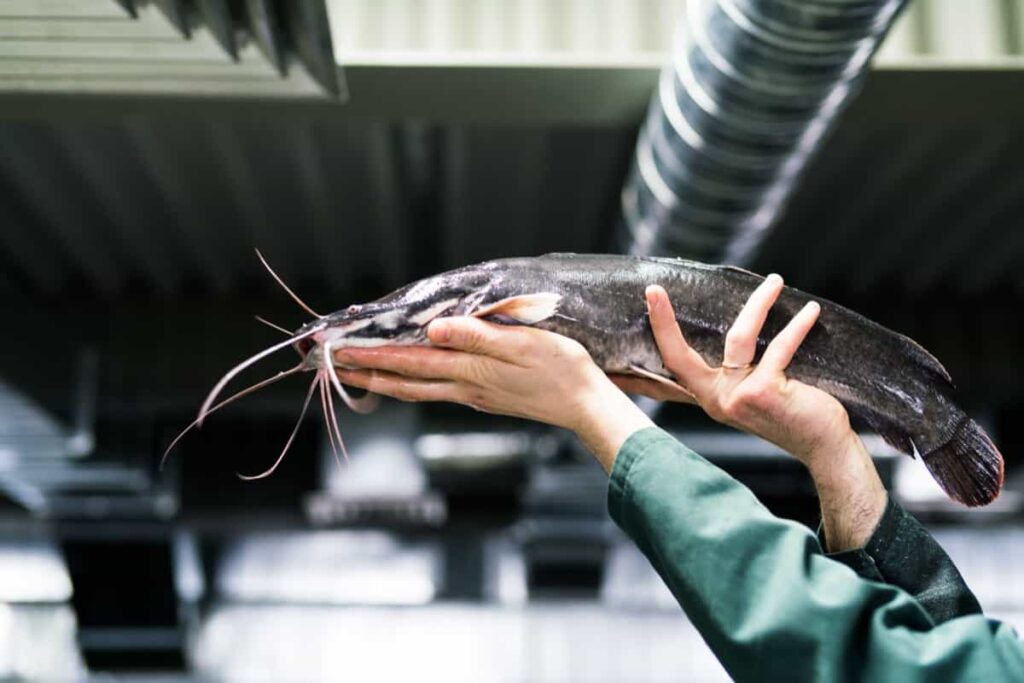
Essential infrastructure components include tanks or ponds, water treatment systems, aeration equipment, and biofloc fish waste management systems. By incorporating biofloc technology, the need for frequent water exchanges is reduced, saving water and reducing the farm’s environmental impact. Proper infrastructure setup ensures optimal biofloc fish nutrition, leading to healthier and faster-growing fish.
Selecting Suitable Fish Species for Biofloc Farming
One of the most critical decisions in biofloc fish farming is selecting the right fish species. Factors to consider include market demand, adaptability to biofloc conditions, growth rates, and potential profitability. Biofloc tilapia farming is popular due to the hardiness of tilapia and its adaptability to various conditions. Similarly, biofloc catfish farming is preferred by some farmers due to the high market demand for catfish.
Although not fish, shrimp are also suitable for biofloc culture, and biofloc shrimp farming has recently seen significant growth. Once the species is selected, it is paramount to acquire healthy fingerlings or juveniles and ensure they receive the right biofloc fish nutrition. Lastly, those interested in this venture should consider biofloc fish culture training to enhance their knowledge and skills, ensuring the highest chances of success in their biofloc fish farming endeavor.
Setting Up the Biofloc System and Equipment
When transitioning to biofloc fish farming or starting afresh, it’s imperative to set up the biofloc system and the necessary equipment correctly. The tank or pond should be appropriately sized at the heart of this system based on the number and type of fish being farmed. Next, an efficient aeration system is crucial, as biofloc technology relies heavily on maintaining adequate oxygen levels to sustain both the fish and beneficial microorganisms. The installation of mixers or aerators ensures proper circulation and oxygen distribution.
Water treatment systems and biofloc fish, waste management components, play a significant role in maintaining water quality by recycling waste products and converting them into microbial proteins. Additionally, nets, pumps, and other necessary tools should be on hand to facilitate day-to-day operations. Picking the right gear and looking after it is crucial for biofloc fish farming because equipment costs a lot, and it needs to last and work well for a long time.
Preparing the Pond for Biofloc Fish Farming
Preparation of the pond is a foundational step that determines the success of biofloc fish farming. Start by ensuring the pond or tank is clean and free from residues or contaminants. The next step is to fill the pond with clean water, ensuring it’s dechlorinated if sourced from a municipal supply. To maintain the desired water parameters conducive to biofloc technology, adjust pH levels, usually aiming for a neutral range between 6.5 to 7.5.
In case you missed it: Fish Farming in Thailand: Requirements, Types of Fish, and Government Support
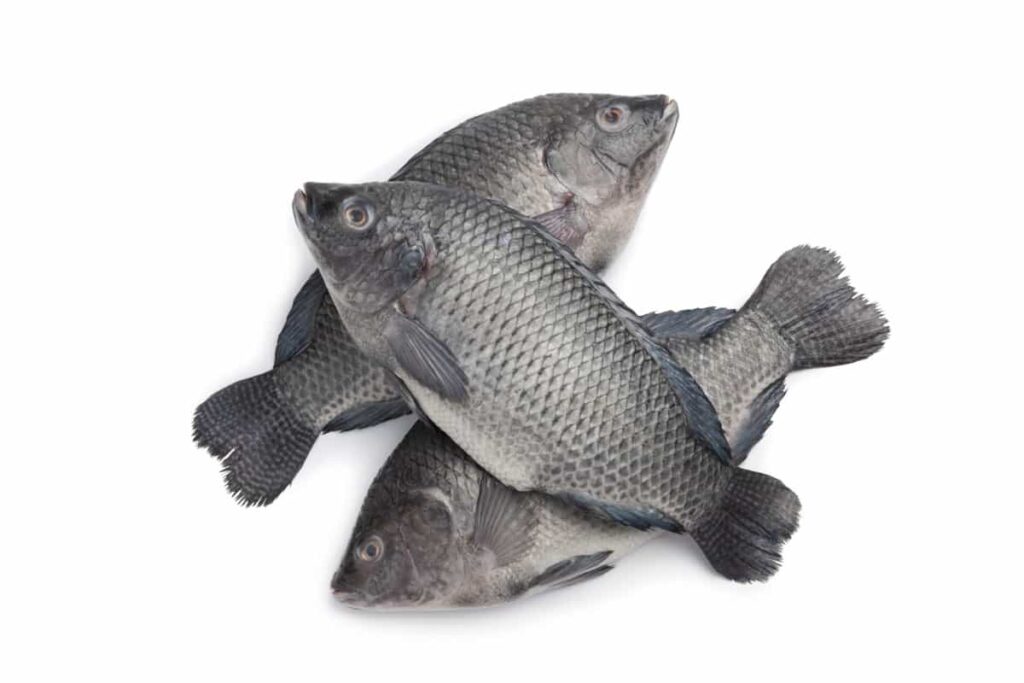
Depending on the cultured fish species, salinity and hardness adjustments might also be necessary. Incorporating biofloc fish farming techniques at this stage, like a controlled feeding regime, will prevent overfeeding, reduce waste accumulation, and promote the growth of beneficial microorganisms that play a pivotal role in the biofloc system.
Introducing Beneficial Microorganisms to the Pond
Beneficial microorganisms play a vital role in the biofloc fish farming process. They help convert fish waste and uneaten food into proteins that can be consumed by the fish, enhancing biofloc fish nutrition. After preparing the pond, it’s time to introduce these beneficial bacteria and microorganisms.
Using commercially available probiotics, inoculants, or even mature water from an existing biofloc system can kickstart the microbial community. Molasses or wheat bran can be added as a carbon source to boost the growth of these beneficial microbes. Over time, these organisms will multiply, forming biofloc particles that contribute to biofloc fish nutrition and help maintain water quality by consuming excess nutrients.
Monitoring Water Quality Parameters Regularly
Ensuring optimal water quality is paramount in biofloc fish farming. Monitoring water quality parameters regularly is essential for the fish’s well-being and the biofloc system’s overall efficiency. Key parameters include pH, dissolved oxygen, ammonia, nitrites, nitrates, and alkalinity. Maintaining a stable pH ensures the survival and growth of both fish and beneficial microorganisms. Dissolved oxygen levels should be optimal through aeration, as it’s vital for fish health and microbial activity.
The nitrogen cycle, involving ammonia, nitrite, and nitrate levels, indicates the efficiency of the biofloc system in waste management. Rapid increases in ammonia or nitrite can hurt fish and indicate a problem with the system. Regular monitoring and timely interventions, such as adjusting aeration or modifying feed inputs, can help maintain these parameters within desirable limits, ensuring the success of the biofloc fish culture.
Feeding and Nutrition Management in Biofloc Fish Farming
Effective feeding and nutrition management form the backbone of a successful biofloc fish farming venture. The unique feature of biofloc technology is its ability to transform fish waste and uneaten feed into microbial proteins, offering an additional nutritional source for the fish. Despite this, a balanced and high-quality feed is still crucial. The feed should be provided in quantities that meet the fish’s nutritional requirements without overfeeding, as excess food can disrupt the biofloc system’s balance.
In case you missed it: Tilapia Fish Farming in South Africa: Business Plan, Cost and Profit Analysis
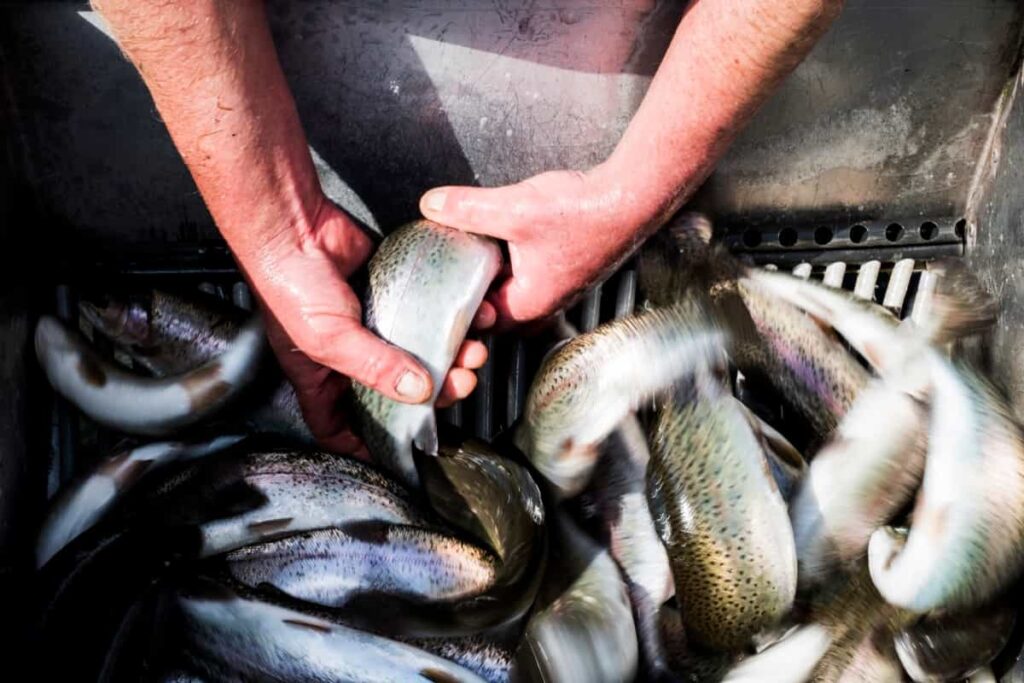
Regularly observing fish behavior during feeding times helps in adjusting feed quantities. Additionally, the nutritional content of the biofloc can be analyzed periodically, allowing farmers to modify the primary feed accordingly. With a keen focus on biofloc fish nutrition, farmers can optimize growth rates, reduce feed costs, and enhance the system’s overall productivity.
Disease Prevention and Biosecurity Measures
In biofloc fish farming, as with any other aquaculture method, disease prevention is better than cure. Implementing strict biosecurity measures is the first defense against potential disease outbreaks. Starting with sourcing high-quality and disease-free fingerlings or seeds is vital. Limiting access to the farm, especially the pond area, reduces the risk of introducing pathogens.
Tools, equipment, and even footwear used in the pond should be regularly disinfected. Quarantine any new fish batches before introducing them to the main pond. Monitoring fish behavior and health regularly helps in the early detection of any issues. If any sign of disease is observed, prompt action, possibly in consultation with an aquaculture specialist, can prevent a full-blown outbreak. Ensuring good water quality, balanced nutrition, and a stress-free environment for the fish are proactive ways to minimize disease risks.
Managing Oxygen Levels in the Pond
Oxygen is the lifeline of biofloc fish farming. The fish and the beneficial microorganisms in the system rely on adequate dissolved oxygen levels to thrive. Several factors, including water temperature, fish biomass, microbial activity, and organic matter decomposition can influence oxygen levels.
A well-functioning aeration system with aerators or paddle wheels ensures oxygen is distributed evenly throughout the pond. Monitoring dissolved oxygen levels regularly, preferably daily, is crucial. Ideally, levels should be maintained above 5 mg/L for optimal fish health and biofloc activity. When oxygen levels drop suddenly, possibly due to power outages or equipment failure, backup aeration or emergency oxygen sources can be a lifesaver, preventing fish mortality.
Harvesting and Marketing the Biofloc Fish
Once the fish reach marketable size, harvesting, and marketing are the final step in the biofloc fish farming cycle. Using nets or specialized harvesting equipment, fish are collected with minimal stress. Post-harvest, fish can be processed based on market requirements, either sold fresh, frozen, or processed further. An essential aspect of marketing is understanding consumer preferences and market demand. Building relationships with wholesalers, retailers, or direct consumers can secure better prices and consistent demand.
In case you missed it: Fish Pond Size Calculator: Ideal Pond Size for 1000, 5000, and 10,000 Fish
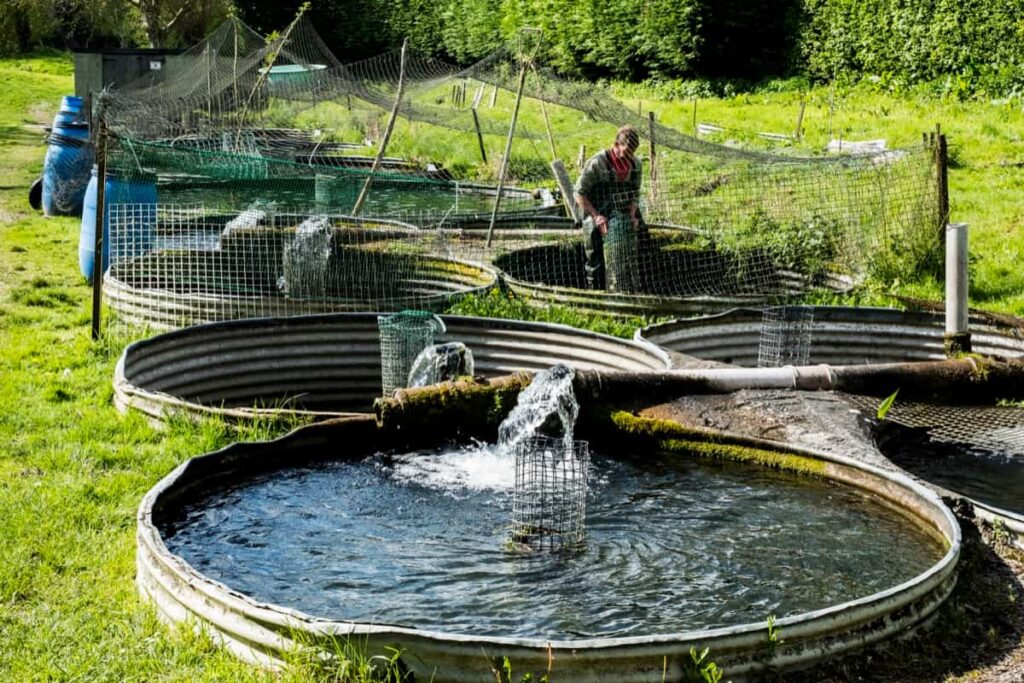
Additionally, promoting the sustainability and benefits of biofloc technology can attract environmentally-conscious consumers willing to pay a premium for sustainably farmed fish. Keeping up-to-date with market trends, adjusting production based on demand, and continually seeking ways to improve product quality will ensure long-term success and profitability in biofloc fish farming.
Maintaining Records and Financial Management of the Biofloc System
Accurate record-keeping and astute financial management are integral to the success of any biofloc fish farming enterprise. Maintaining records includes tracking daily feed inputs, monitoring growth rates, noting water quality parameters, and logging any interventions or treatments. On the other hand, financial records should encompass all expenses, sales, and profits. A comprehensive record system helps evaluate the operation’s performance, plan future stocks, and ensure profitability. Moreover, it aids in budgeting, forecasting, and making informed decisions based on historical data.
Scaling Up the Biofloc Fish Farming Operation
Expanding a biofloc fish farming operation should be cautiously and strategically planned. Before scaling up, ensure the existing system is stable, profitable, and efficiently managed. Expansion can be by adding more tanks or ponds or diversifying into different fish species or shrimp. While scaling, consider factors like water supply, biofloc fish waste management, labor requirements, and marketing strategies. Seeking advice or undergoing advanced biofloc fish culture training can provide insights and techniques for managing large-scale operations.
Biofloc Fish Farming Cost and Profit
Biofloc fish farming, an innovative methodology in sustainable aquaculture, capitalizes on beneficial microorganisms to recycle fish waste. This eco-friendly approach conserves water and minimizes the environmental concerns associated with traditional fish farming. Among the species cultivated, tilapia, catfish, and shrimp are predominant. Starting a biofloc farm might demand an initial investment, with hypothetical figures suggesting costs of $50,000 for infrastructure and equipment and an additional $10,000 for fish stocking.
Operational expenses might hover around $20,000 annually, covering feed, labor, electricity, and maintenance. Yet, the system’s efficiency can lead to substantial profit margins. Given the reduced water costs and potential feed savings, coupled with a market price of, say, $5 per pound of tilapia, $6 per pound of catfish, and $15 per pound of shrimp, a well-managed biofloc farm can achieve an annual profit margin of 40-60%.
The Best Fish for Biofloc Farming
When considering species for biofloc fish farming, adaptability to the biofloc environment and market demand is paramount. Tilapia and catfish are popular due to their hardiness and rapid growth. Both species adapt well to biofloc conditions and have robust market demand. Though not fish, shrimp have also found a niche in biofloc systems due to their high profitability before deciding on a species, research market preferences, growth rates, and potential challenges associated with each species in a biofloc setup.
In case you missed it: Profitable Carp Farming in the Philippines: A Step-by-Step Guide for Carp Fish Culture
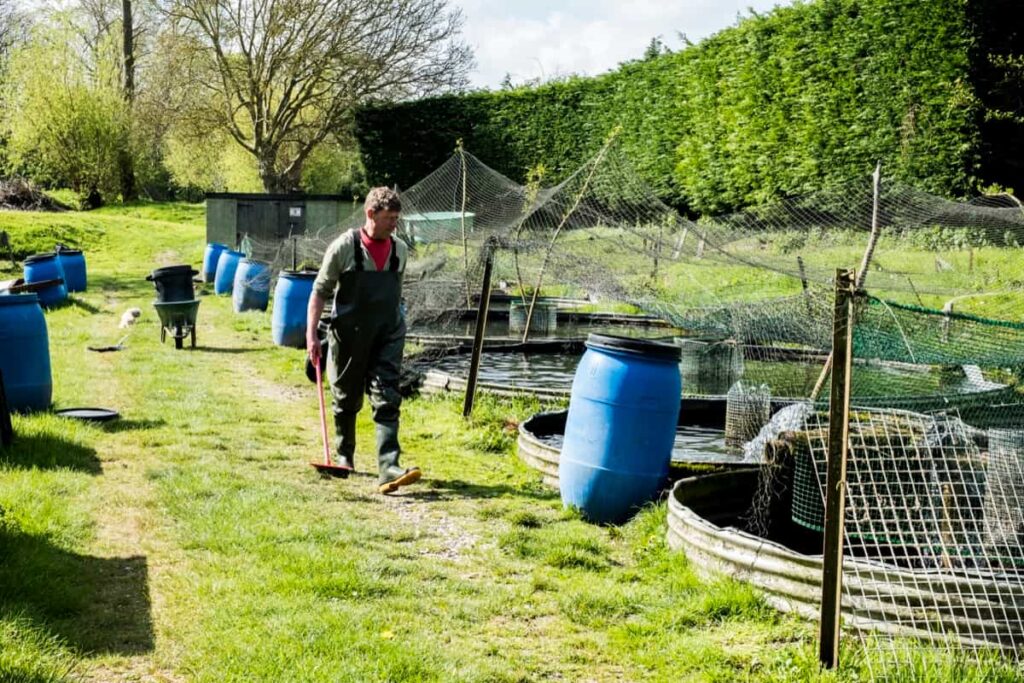
Pros and Cons of Biofloc Fish Farming
Biofloc fish farming offers numerous advantages. The system promotes water conservation as it requires minimal water exchange. The conversion of waste into microbial protein enhances fish nutrition, possibly reducing feed costs. Additionally, it presents an eco-friendly approach to aquaculture by minimizing waste discharge into the environment. However, there are challenges, too. Initial setup can be capital-intensive.
The system requires constant monitoring of water quality parameters, and any imbalance can lead to reduced fish health and growth. Also, understanding and managing the biofloc system might have a steep learning curve for newcomers. While the pros often outweigh the cons, potential farmers must know both sides before venturing into biofloc fish farming.
Overview of Biofloc Fish Farming
| Aspect | Description |
| Basic Concept | Sustainable aquaculture method utilizing beneficial microorganisms to recycle fish waste. |
| Key Benefit | Water conservation, reduced environmental impact, and enhanced fish nutrition. |
| Popular Species | Tilapia, catfish, and shrimp. |
| Initial Costs | Infrastructure setup, equipment purchase, and fish stocking. (around $60,000 annually) |
| Operational Costs | Feed, labor, electricity, and maintenance. (around $20,000 annually) |
| Primary Equipment | Tanks/ponds, aeration systems, water treatment systems, nets, and pumps. |
| Water Quality | Requires regular monitoring of pH, dissolved oxygen, ammonia, and nitrates. |
| Harvest | Fish are harvested when they reach marketable size. Can be sold fresh, frozen, or processed. |
| Market Demand | Depends on the species. High demand for tilapia, catfish, and shrimp in many regions. |
| Challenges | Initial setup costs need regular monitoring and potential for imbalances. |
Conclusion
In a world of resource constraints and environmental challenges, biofloc fish farming stands out as a beacon of sustainable aquaculture.
- Management Pests and Diseases in Your Cotton Field
- Sheep Farming Business Plan for Beginners
- Aquaponic Farming at Home: A Step-By-Step Guide
- Profitable Village Farming Business Ideas in 2024
- High-Yield Aquaculture: Fast-Growing Fish for Farming
- Effective Fish Pond Construction Techniques for Beginners
- Irrigation and Water Management in Pineapple Farming
- Blossom to Harvest: Mastering Flowering and Pollination in Papaya Farming
- Pig Fattening Essentials: From Selection to Sale for Beginners
- Raising Wagyu Cattle: A Complete Guide for Premium Beef Production
- Soil Types and Their Water Holding Capacity
- Optimizing Irrigation Schedules for Coconut Groves for Enhanced Yield
- Espresso Your Garden: Coffee Grounds for Healthier Acid-Loving Plants
- The Best Soil Mix for Snake Plants: How to Mix Your Own Snake Plant Soil
- Green Thumb Success: Expert Tips for Cultivating Greenhouse Beans All Year Round
- Bloom All Year Round: The Ultimate Guide to Indoor Hyacinth Care
- Eco-Friendly Gardening: How to Make Liquid Fertilizer from Kitchen Waste
- Ultimate Guide to Grow Anise in Pots: Explore Seed Propagation to Harvesting
- Guide to Raising Chester White Pigs: Discover Breed Facts to Growth Management
- Mastering the Elegance: The Ultimate Guide to Weeping Cherry Tree Care, Planting, and Maintenance
- Ultimate Guide to Planting Garlic in Grow Bags: Growing Strategies for Beginners
- How to Fix Spider Plant Leaf-Related Problems: Natural and Organic Remedies
- 10 Reasons Why Your Tulsi Plant is Shedding Leaves: Home Remedies and Solutions
- Optimizing Growth and Yield: The Advantages of Palm Bunch Ash Fertilizer
- Utilizing Neem Oil Extract as a Natural Pesticide for Hydrangea
- From Soil to Harvest: Various Ways in Which Farmers Can Use AI Tools
- Steps to Encourage and Induce Citrus Flowers: A Comprehensive Guide
- How to Fix Snake Plant Leaf-Related Issues: Natural and Organic Remedies
- Transform Your Garden into a Fragrant Oasis with Raat Ki Rani (Night Blooming Jasmine)
- Discover the Ideal Chicken Breeds for Philippine Farms
- How to Create a Poultry Egg Farm Business Plan for Profits
- Grow Lemon Cucumbers Like a Pro: Insider Techniques for Bountiful Yields
- Ultimate Guide to Caring for Your Pink Princess Philodendron: Tips for Thriving Variegation
- Areca Nut Profit Per Acre: Calculating Yield and Cost of Cultivation
- How Kaveri Chicken is Becoming a More Profitable Breed in Indian Backyards
- Transform Your Barn: 9 Steps to Convert a Horse Stall into a Chicken Coop
